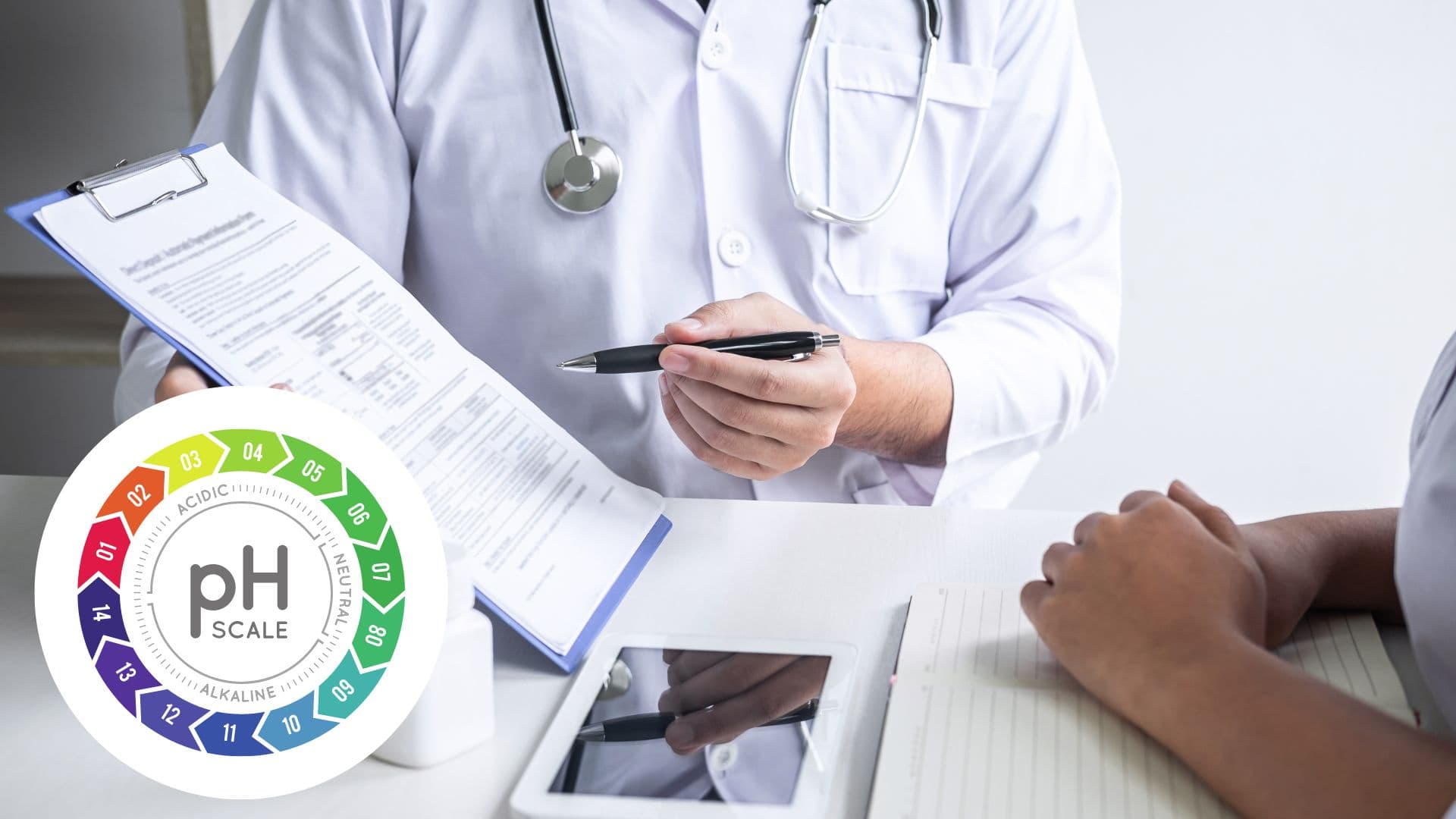
Acid-base disorders can be primary or mixed. They are common in critical care settings. It is important to recognize and correct acid-base disorders to prevent morbidity and mortality. Calculating expected compensations helps to correctly diagnose the type of acid-base disorder.
If you’re looking for a comprehensive course to pass your USMLE Step 1 exam the first time, try Achievable’s USMLE Step 1 course. Our course is information rich, concise, and uses spaced repetition-backed practice questions to improve your memory retention.
1.0s Hello, I'm so jata. I am the founder of Gracie with Emily and he was Emily alter a terrible. In this video, we will talk about acid, base disorders, acid base, disorders are caused by abnormal changes in the pacu to or the bicarb levels and they are often accompanied by changes in the blood pH. 24.3s To understand the acid-base disorders. We need to memorize a few normal values. On the arterial blood, gas analysis. So these include normal arterial pH, which ranges from 7.35 to 7.45, normal paco2, which is the partial pressure of carbon dioxide, which ranges from 35 to 45, mm, Mercury. And the normal bicarb levels, which ranges from 22 to 28 ml equal a liter. 58.4s There are four primary acid-base disorders. Those are metabolic acidosis. Metabolic alkalosis respiratory, acidosis. And respiratory alkalosis. Let's look at each of them, one by one. 76.7s Metabolic acidosis is caused by an abnormally, low levels of bicarb in the blood. It can be of two types depending on whether the anion gap is now, or it is elevated. Anion gap is nothing but the difference between the cations and the Anna ands in the blood, the formula to calculate anion gap is concentration of sodium minus, the concentration of chloride and bicarb normal. Anion gap is between 10 to 14, Willie Colon politur, 115.9s Increased anion gap. Metabolic acidosis is characterized by an anion gap that is higher than 14. It can be remembered by the mnemonic. Matt filers 128.5s common causes of increased anion gap. Metabolic acidosis include include a renal failure, diabetic ketoacidosis and ethylene glycol poisoning in normal anion gap, metabolic acidosis, the Anton Gap stays within the normal range of 10 to 14 mm or molecular a letter. Common causes include diarrhea and renal tubular acidosis. You should remember all the causes of renal tubular acidosis, major among them are aldosterone antagonist and acetazolamide 168.5s Metabolic alkalosis is characterized by abnormal elevated bicarb levels. Common causes include hyperaldosteronism Conn's syndrome where there is an adenoma prolonged vomiting and diarrhea side or Loop diuretics. 188.8s Respiratory acidosis. Occurs because of carbon dioxide retention mostly because of any reason that he needs to a decreased respiratory rate, the PSU to or pco2 levels will be higher than 45 mL of Mercury. 206.6s Common causes of respiratory acidosis, include opiate, overdose morbid, obesity sleep apnea and complications seen in asthma COPD and respiratory distress syndrome. When the respiratory rate decreases, 226.1s In acute, respiratory acidosis, the serum bicarbonate is equal to or less than 30. Where is in? Chronic respiratory acidosis. The bicarb level is more than 30 241.5s Respiratory alkalosis is characterized by an increased respiratory rate which leads to reduction in the pco2 level to below. 35, mmhg, 256.3s Common causes of respiratory, alkalosis include high altitude pregnancy and aggressive mechanical ventilation in acute. Respiratory alkalosis the bicarb is more than 18 in chronic respiratory alkalosis. The bicarb is between 12 to 18 277.6s Let's talk a little bit about compensations in acid-base disorders. Whenever there is a primary acid base disorder, the body tries to compensate to bring back the arterial, pH back to normal and that's called as a compensation. It is always exactly opposite to the primary metabolic disorder. For example, if the primary metabolic disorder is a metabolic acidosis. The compensation is exactly opposite to it which will be respiratory. Alkalosis on the other hand, if the primary acid base disorder is metabolic alkalosis, then the compensation is going to be a respiratory acidosis and so on. 323.6s Full compensation of an acid base disorder. Almost never happens. If that is the case, then the compensation is able to rectify the ph and bring it in the normal range. Hollywood. Partial compensation is seeing a lot of times to understand the degree of compensation that has happened. We need to use a few equations are for me. 350.3s the formula to calculate the expected compensations, are on the slide shown 358.4s Listen example of metabolic acidosis. Winters formula is used to calculate the expected compensation in metabolic acidosis. So let's revisit this dub in the primary disorder is metabolic acidosis. You expect the compensation to be a respiratory alkalosis, which means the compensation is going to decrease the observed levels of pco2 and that's what we are trying to calculate in the winters formula. 392.8s Winters formula states that the expected paco2 is equal to 1.5 into bicarb + 8 and the range is plus or minus two. 407.5s Let's take an example of an ABG for metabolic acidosis where the observed paco2 is 42. And the absorbed bicarb is 20, 420.7s Putting the level of bicarb in the winters formula we can calculate the expected pco2. In this example to be in the range of 40 to 44, mmhg. 436.8s Or observed PSU in the ABC is 42, which is in the range of expected paco2 that be calculated by the winters formula. So that means this is an uncompensated metabolic acidosis. 454.7s Suppose, we observed paco2 in the ABT was lesser than the expected range. For example, the piece you to, observe, as 35, mmhg, then that means, there is an inspiratory alkalosis, which is the expected compensation, for metabolic acidosis. And your diagnosis will be a partially compensated metabolic acidosis since the pH is still not in the normal range. 486.3s Let's take another scenario in the same ABG. If the observed paco2 was 55, mmhg, and you are expecting your PSU to buy Winters formula to be in the range of 40 to 44, mmhg. Then what you see on the eh Bee, Gee is definitely an elevated paco2 when that happens. It means there are at least two disorders of acid-base metabolism. In this case, since the PSU to is higher than expected. The disorder that is present. Along with the metabolic acidosis will be respiratory acidosis. 531.4s Sometimes when multiple acid-base disorders are present, the pH may be normal or even very close to normal in that case. We know there is an acid-base disorder because the values for bicarb and PS you two will be abnormal 551.6s So by using the formulas for expected compensations, you even be able to know whether the acid-base disorder is uncompensated partially compensated or if multiple disorders are present in the same patient. 569.0s Hope this video help you understand the concepts in acid-base disorders, better. Thanks for watching.

This video explains the changes seen in cardiac cycle tracings in valvular heart diseases. You can learn key features to help you differentiate normal from abnormal tracings in specific valvular disorders.

Becoming a pharmacy technician is an excellent choice for those interested in an accessible, lucrative career path within the healthcare field. Acquiring a pharmacy technician certification will allow you to outshine competitors and enhance your chances of obtaining your ideal position within the pharmaceutical industry. In order to earn a Certified Pharmacy Technician (CPhT) credential, …

In this video Sujata explains the pathophysiology, diagnosis and management of pneumothorax. It is a high yield concept for all steps of the USMLE. Pneumothorax is of four different types and management is guided by the type and severity.